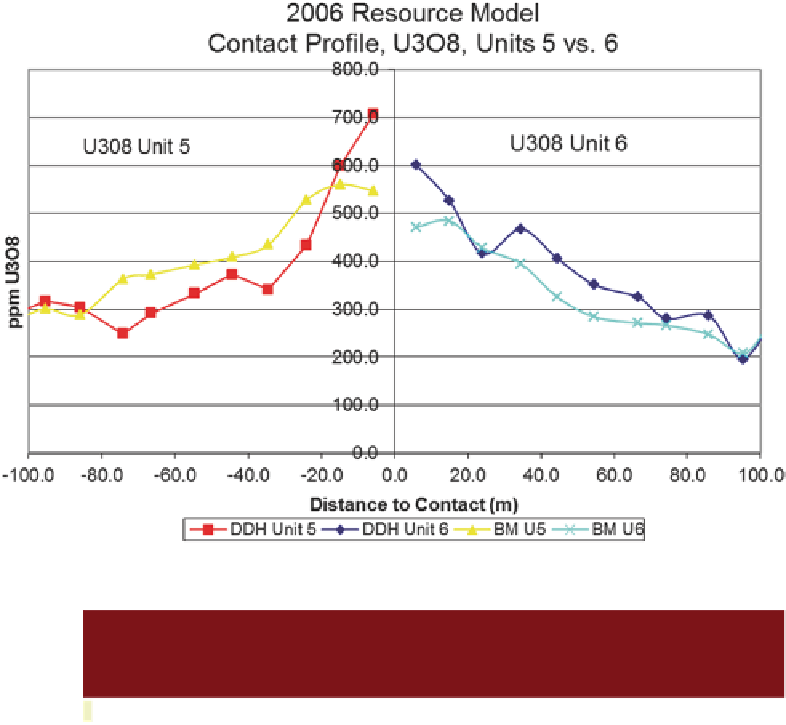Geoscience Reference
In-Depth Information
Fig. 11.5
North-South trend
of TCu grades (%), 50 m
slices
Table 11.1
Example of target
vs. achieved basic statistics by
estimation domains
Estimation
Domain
Kriged Mean
Grade
Predicted
Mean Grade
of the SMU
Coef.of
Variation of
Block
Estimates
Predicted
Coef.of
Variation of
the SMU
1
0.805%
0.882%
0.745
0.698
2
1.553 %
1.673%
0.504
0.470
3
0.231%
0.333%
0.735
0.805
4
1.294%
1.648%
0.579
0.599
5
0.691%
0.823%
0.639
0.649
6
0.509%
0.611%
0.563
0.596
7
0.927%
1.058%
0.607
0.627
and the geologic codes applied. This should be done both on
the computer screen, using the visualization capabilities of
the mining software used, and on as large a sheet of paper as
practical, paper size E being the most common.
Typically, cross sections and plan views of the geologic
model and of the block model grade and the composited
drill hole data are plotted out. Figure
11.7
shows a detail of a
cross section comparing two models of mineralization units
for BHP Billiton's Cerro Colorado mine. The two models
are compared with different shades for the outlines of the
units. The old model is represented in white outline while
solid colored outlines represent the updated model: green is
oxides, red are enriched supergene sulfides, and yellow is
a transitional supergene-hypogene unit. Brown is the leach
cap unit, and purple is the hypogene unit, for which the in-
terpreted outlines are not shown here.
This comparison is appropriate when a new, updated
model has been interpreted based on additional drill hole
data, and it is necessary assess the impact of the new drilling
on the old interpretation. Notice that a new drill hole (second
from right in the Fig.
11.7
) has truncated the upper oxide
body (in green) and has created a small isolated supergene
sulfide body (in red). The outlines of the previous and up-
dated model are visible.
Figure
11.8
shows an example of a cross sectional view
with color-coded block grades, as well as drill hole composite
grades. Several surfaces are also shown, including current
topography (in green) planned final pit outline (in magenta),
and the mineralized envelope that defines the volume filled
with blocks. Good practice is to use warmer colors for higher
grades, and the same color scheme for both blocks and com-
posite grades.
Detailed review and examination of these plots provides
assurance that the estimation or simulation procedure did not
produce unexpected erroneous results. It also provides a set
of ready plots for future reviews and audits, internal or exter-













































